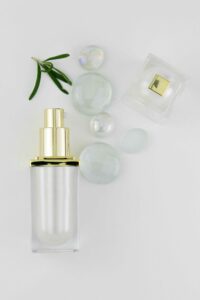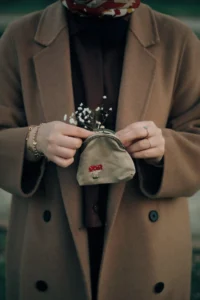Prepaid = Best Price ● Free Shipping & Samples on 50mL+ ● COD? Yes, We Got You
The Perfume Saga: Ancient Origins to Modern Elegance
Perfume, an enduring art form that transcends time, boasts a captivating history. From its ancient roots to its present-day embodiment of modern luxury, perfume has undergone a remarkable journey. Join us as we delve deeper into history, exploring the origins of perfume, the influence of Asian and Indian cultures, and the trends shaping the industry.
The Birth of Perfume: Ancient Beginnings
Perfume’s roots stretch back thousands of years to ancient civilizations, where it emerged as a cultural and spiritual cornerstone. The term “perfume” originates from the Latin phrase “per fumum,” meaning “through smoke.” Early perfume-makers, inspired by the burning of aromatic substances, crafted blends with incense, myrrh, and frankincense. Beyond spiritual and medicinal purposes, these fragrances also became sought after in the courts of Egypt and Mesopotamia.
The Enchanting World of Ancient Egypt
Egypt holds a special place in the tapestry of perfume history. The ancient Egyptians, true perfumery pioneers, utilized scented oils and resins for religious rituals and personal adornment. The legendary Queen Cleopatra, with her well-documented affinity for perfumes, played a pivotal role in elevating fragrance to a symbol of luxury.
Cleopatra’s opulent perfumed oils were not just a beauty ritual; they were a statement of power and allure.
Asian and Indian Contributions
The fragrance trail extends to the East, where Asian and Indian cultures left an indelible mark on perfumery. India, in particular, boasts a rich tradition dating back to ancient times. Essential oils extracted from flowers like jasmine and rose found a dual purpose, gracing both spiritual rituals and everyday life. The concept of “attars,” traditional Indian perfumes, stands as a testament to the region’s profound influence on the aromatic world.
The waft of attars in Indian bazaars is a sensory journey through centuries of perfumery excellence.
Perfume in Ancient China
In the ancient realm of China, perfume-making was elevated to an art form. Natural ingredients like sandalwood, camphor, and various floral essences took center stage. Beyond mere adornment, these fragrances were employed in rituals and cherished for their therapeutic benefits. The Chinese also pioneered methods for creating solid perfumes, showcasing their mastery in the craft.
Solid perfumes, a Chinese innovation, feel like a fragrant touchstone connecting us to the sophistication of ancient times.
Perfume in Greece and Rome
Ancient Greece and Rome embraced perfumes as an integral part of daily grooming rituals. Fragrances, crafted from a rich palette of ingredients including flowers, spices, and resins, became expressions of sensuality. The popularity of perfume soared, becoming an essential aspect of personal adornment.
Anointing with fragrant oils in ancient baths was not just a ritual; it was a celebration of the senses.
The Middle Ages and the Renaissance: Fragrance Revival
The Middle Ages witnessed a revival of perfume-making in Europe. Perfumers, inspired by the aromatic treasures from the East, experimented with new ingredients and perfected the art of distillation. Spices and exotic substances like ambergris and musk found their way into perfumes, adding complexity and depth to the olfactory experience.
Medieval perfumers, like alchemists of scent, transformed raw materials into fragrant elixirs, paving the way for modern perfumery.
The Birth of Modern Perfumery
The 17th century in France marked the birth of modern perfumery. Renowned perfumeries such as Guerlain and Houbigant established themselves, introducing innovative techniques for extracting and blending fragrances. The concept of “eau de cologne” emerged during this period, democratizing access to perfume and making it a daily luxury.
The creation of “eau de cologne” felt like a breath of fresh air, bringing the allure of fine fragrances to a broader audience.
20th Century and Beyond: Perfume as Art and Luxury
The 20th century witnessed an explosion in the perfume industry, with iconic brands like Chanel, Dior, and Gucci shaping it into a symbol of luxury. Perfume became an art form, with each brand offering a unique olfactory experience. It became not just a scent but a statement of style and sophistication.
Opening a bottle of a classic perfume is like unlocking a time capsule, transporting us to the glamour of bygone eras.
Today's Perfume Trends
Modern perfumery thrives on constant innovation and cutting-edge technology. Niche perfumers, with their artisanal creations, gain recognition, challenging the conventions of mainstream scents. Sustainability and the use of natural ingredients have become key considerations for today’s fragrance enthusiasts.
Exploring niche perfumes feels like discovering hidden gems, each bottle telling a unique and exquisite story.
In Conclusion: The Timeless Allure of Perfume
In conclusion, the history of perfume is a captivating journey filled with cultural influences, innovative techniques, and evolving trends. House of Kanzan is proud to be a part of this rich tradition, combining the wisdom of the past with the vision of the future to create fragrances that capture the essence of both ancient and modern luxury. Perfume has come a long way since its ancient beginnings, and it continues to enchant and inspire us with its timeless allure. As we embrace the scents of yesterday and today, we look forward to the fragrances of tomorrow, where the legacy of perfume evolves with the ever-changing tapestry of time.


